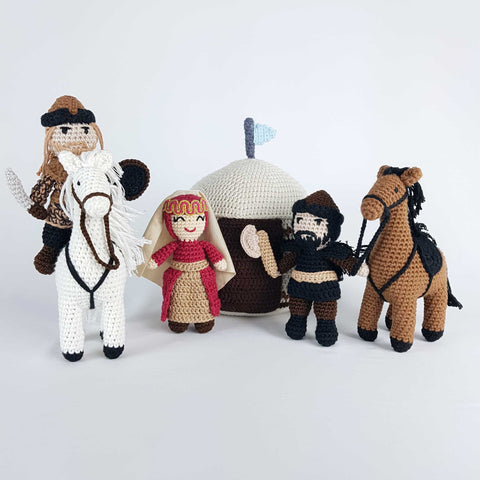
The Importance of Diverse Toys
The Importance of Diverse Toys
Introduction
The toy industry has long been criticized for its lack of diversity. The most popular toys are often created with a specific audience in mind, and as a result, they fail to represent the lives of kids who don't look like their creators. For example: Barbie is often labeled as an unrealistic body image for girls because her body type is not relatable to many girls. But what if you could have a doll that looked like you? Or one that's a different race than yours? Not only would it make playing with dolls more fun, but it would also give children an opportunity to learn about themselves and others through play!
Playtime is universal
Playtime is universal. It’s a common denominator for all children, regardless of age or background.
There are so many ways that playtime can be beneficial to both child and parent; it helps to build self-esteem, develop social skills and boost confidence. Toys that encourage imagination help kids learn new things while having fun at the same time. The more they play with their toys, the more they will discover about themselves and their world around them.
Diverse dolls, playsets and books are a great way to accomplish this goal.
Representation matters
Playtime is a form of communication, and it's important for children to be able to use that communication to express themselves as they grow and develop their identities as individuals. Diverse toys help them do this by providing them with opportunities to see themselves reflected back at them in the things around them—and that's extremely valuable for building self-esteem and confidence.
This is one of the reasons that author Heba Subeh Hyder wrote the Maymunah’s Musings Series. Maymunah is a Indonesian and African American character who goes on numerous adventures to learn about her Creator.
“I wanted kids to see themselves in Maymunah …I wanted to represent normal fun stories of Maymunah camping and fishing and at the same time, include parts that represented Maymunah’s Muslim identity where she performs the evening prayer. I wanted to portray this as not something strange or abnormal thing but something to be proud of,” says author Heba.
Playtime is a universal language
Playtime is a way for us to learn about the world and ourselves. We use playtime as a tool to develop our sense of self, as well as how we relate to others. As adults, we are able to understand that there are many different ways in which people can be creative and successful at their own preferences — from cooking or art, through sewing and knitting all the way to writing poetry or playing an instrument.
But this isn't just for adults: children need these opportunities too! They need toys that help them explore themselves without concern for what others will think about them; toys that encourage imagination without fear of failure; toys that allow children's creativity flow in any direction without judgment being passed upon them by those around them (parents included).
For example, playing with toys that represent architecture from around the world, such as Masjid Playsets, help children build connection and learn about places that are special to others around the world. This can be further emphasized by parents and educators through books such as Jenny Molendyk Divleli's book What Colour is Your Mosque where children can learn more details about beautiful architecture from around the world in a fun and gentle way.
Teaching empathy through play
Playtime, as you probably know, is a universal language. It's the way we learn about different cultures, people and ways of thinking. Play is a way for kids to express themselves, to explore their identity and find out who they are.
And it's also how we teach them about empathy—the ability to understand and share the feelings of another person. When children use playtime to learn about other cultures or people with disabilities or different ways of thinking or living than their own, they develop an understanding that those differences don't have any impact on someone's character or value as a human being. In fact, these differences make us stronger by showing us how much alike we really are!
Books such as Ramadan Around the World, not only teach children about different cultures and traditions, but also have characters such as Ali who uses a wheelchair and Bilal who has a hearing impairment.
Shaping identity and overcoming stereotypes
The importance of diverse toys cannot be understated. Toys help children learn about the world around them and develop empathy for those who are different from them. Studies have shown that when a child sees a toy that resembles their own gender, race or ethnicity, they are more likely to identify with it as well.
This self-identification can lead to improved self-esteem and confidence in children when playing with toys that represent themselves. It also makes them feel less isolated by providing opportunities for play that reflects their own reality instead of being forced into gender stereotypes or other limiting roles that don’t reflect their real lives or interests.
This is especially important because research has shown young children who do not see themselves represented in media often internalize negative feelings about themselves as they grow up.
This is one of the reasons that historical dolls from the Ertugrul collection have been so popular. The Ertugrul series has gained much popularity around the world. This series and toys, help in shattering negative stereotypes about Muslims and help Muslim children connect to their heritage.
Conclusion
We know that playtime is a universal language, and we can all agree that it is important for children to see themselves reflected in the toys they play with. By choosing diverse toys, you are making an active effort to help make our world more inclusive and welcoming to all children.






